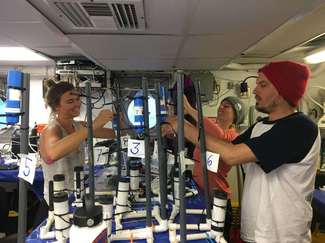 Once we arrive at a new island, the Edwards Lab assembles the sensor stands that are vital to this project Once we arrive at a new island, the Edwards Lab assembles the sensor stands that are vital to this project Nizki Island 7/14/2017 Another day, another deployment. We’ve been in the Aleutians aboard the r/v Oceanus for just over a week now, diving in frigid water almost every day now. After trawling on Attu, we began our steam eastward; in the pre-dawn gloom we “dropped hook” in a small island cluster known as the Semichis. As we stumbled out of our bunks and towards the galley, following the smell of breakfast and hot coffee, a peculiar sight caught my attention; lights in the distance. Deceived by a brain still half-asleep, it took me a minute to process what I saw. Since leaving Adak the last week the only sign of humans we’ve seen have been remnants of WWII and the flotsam that’s washed up on the beaches. Here, in one of the most remote places on the planet, we hardly expect to see another living soul. And yet, what looked like a small city twinkled persistently on the horizon. As the sky began to lighten I realized what we were seeing; the military base on Shemya. During the Cold War the US built a top-secret radar station here, and to this day the ominous “boom box” still listens for ballistic missiles, should they enter US airspace. But we’re not here in the Semichis to gawk; we have our experiments to deploy and samples to collect. As stated before, the benthic productivity chambers (three in each of three habitat-types) are a beast to deploy. It takes all five divers from the Edwards Lab to set them up; we use lengths of heavy chain and whatever rocks we can find to make sure our chambers, and their respective sensors, stay upright all through the day and night. 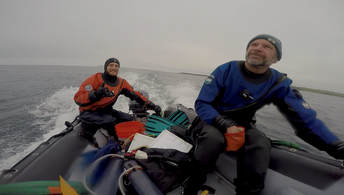 Dr. Edwards looks into the fog as the author drives the inflatable "Wecoma" to our dive site Dr. Edwards looks into the fog as the author drives the inflatable "Wecoma" to our dive site For those of you that might have missed it, inside each chamber we mount an oxygen and temperature sensor and a PAR sensor. PAR stands for “photosynthetically active radiation” or, more simply, the specific chunk of the light spectrum that plants and algae use for photosynthesis. The productivity chambers allow us to gain an understanding of what’s going in a fixed volume of water, which is important when we go to calculate the overall productivity of a system. What do we mean by productivity? We’re essentially looking at the difference between production (measured in the amount of oxygen produced) and respiration (the amount of oxygen consumed). Plants (and algae of course) and animals respire, but only photosynthesizers produce oxygen. Once we have a measurement of oxygen produced/consumed inside the chambers, we can compare that to the data gathered by the sensors we leave outside of the chambers, which are recording what’s going on in the environment. At the end of the 24-hr deployment, we “ground-truth” our measurements by collecting all of the organisms inside of the chambers when we go to pick them up and measure their biomass onboard the Oceanus. All the while we’re at sea, diving and steaming between islands, a colleague from a university in Korea, Dr. Ju-Hyoung, and another Edwards Lab member, Sadie Small, run onboard experiments so we can get measurements of individual species’ rates of oxygen consumption/production.
Alright, I think that’s enough ecology for today. Be sure to check back in, after the Semichis we’re heading east again towards yet another island. Until then, this is Baron von Urchin checking in from the Aleutian Archipelago
0 Comments
Leave a Reply. |
AuthorPike Spector is currently a Research Operations Specialist with Channel Islands National Marine Sanctuary Archives
August 2022
Categories |
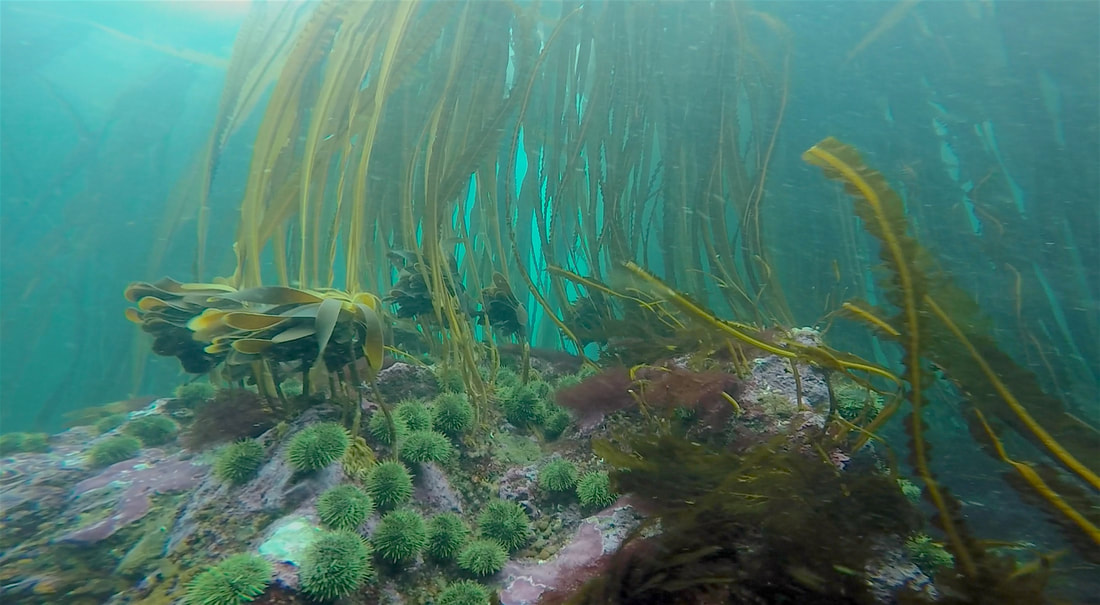
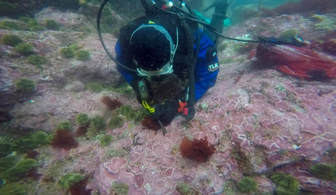
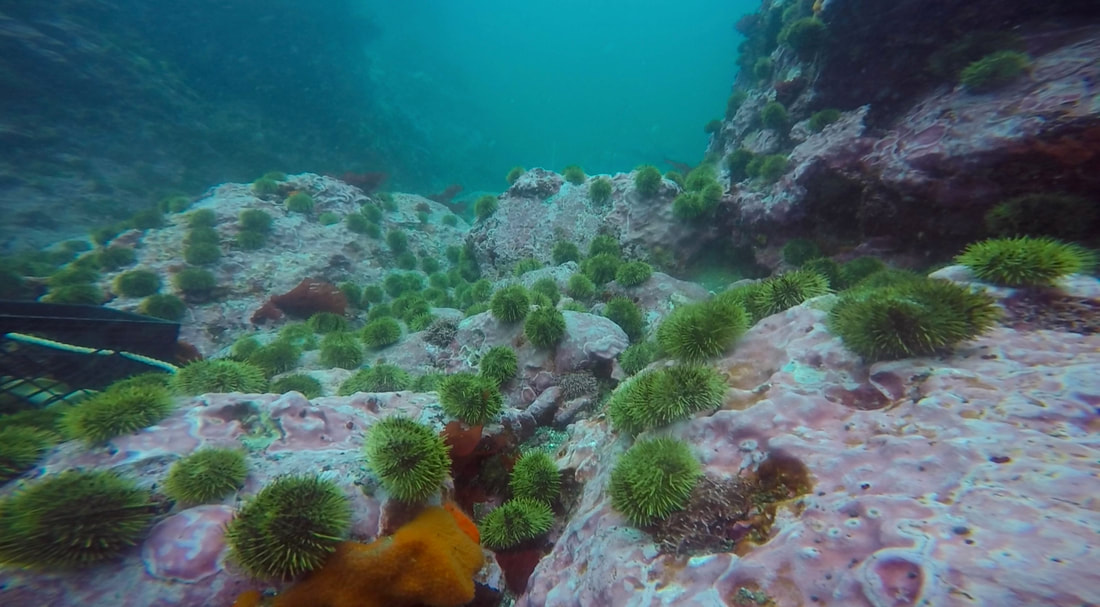
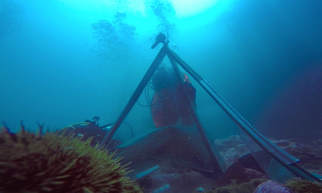
 RSS Feed
RSS Feed
